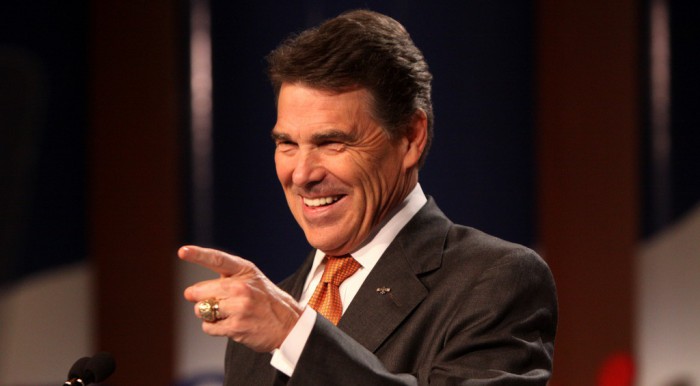

On Aug. 13, 2011, Rick Perry delivered a gift to the Texas Tribune: The governor announced his candidacy for president. Two days later, reporter Jay Root would break the story that Perry had backpedaled on his controversial effort to vaccinate girls against HPV. Root’s story was viewed about 150,000 times in total in 2011 and generated the biggest-ever traffic day for the online startup.
“There’s no question Rick Perry was good for business,” said Trib CEO and editor Evan Smith. “Even if his presidential campaign wasn’t successful these last five months, we were.”
![]() In 2011, the Tribune’s second full year in operation, the website served 5.2 million unique visitors, up from 2.2 million the year before. The plurality of those visitors came from Austin, but out-of-staters in New York and Washington represented the fifth and ninth most represented locales, respectively. The site’s list of most viewed stories for 2011 is chockablock with Perry, Perry, Perry.
In 2011, the Tribune’s second full year in operation, the website served 5.2 million unique visitors, up from 2.2 million the year before. The plurality of those visitors came from Austin, but out-of-staters in New York and Washington represented the fifth and ninth most represented locales, respectively. The site’s list of most viewed stories for 2011 is chockablock with Perry, Perry, Perry.
The governor has been well known to Texans for the past 11 years, but less so elsewhere. Suddenly, the Tribune’s deep well of local knowledge had found national relevance. Tribune reporters could “explain and demystify him for the rest of the country, including for the national press,” Smith said. And Smith knew his audience at home would not be satisfied by wire copy and good aggregation. “There’s nothing that Texans hate more than non-Texans explaining the world to them. So it made a lot of sense to have our guys on the road.”
Putting their guys on the road — at various times, four reporters (including another following Rep. Ron Paul in New Hampshire), a photographer, and a videographer — was costly. (The Trib’s total staff headcount is 30.) Smith estimated the campaign coverage cost about $5,000 per week, once you add up the cramped Southwest flights, the motel rooms, and the midnight meals. And those expenses were not included in the 2011 budget.
“The fact that we’re a nonprofit doesn’t mean we get a friends-and-family rate,” he said. But it does mean Smith could turn to donors for help. The Tribune raised just under $300,000 specially for Perry coverage, he said. All together the Tribune raised $3.71 million in 2011, almost double the year before, and spent $4.01 million; Smith projects the Tribune will be in the black at the end of 2012. The Tribune posts all of its financials online.
Smith said the Tribune did nothing unusually innovative in their Perry coverage, at least by their standards — just more (“covering the waterfront, flooding the zone, and assorted other journalistic cliches,” he wrote in a New Year’s recap post.) The data journalism team created an interactive Perry tracker, showing where the candidate had been and where he was headed. And a landing page — er, vertical, I guess — called Perrypedia aggregated their own stuff — videos, narrative stories, campaign finance reporting — as well as material from some national sources.
A partnership with The New York Times, now into its second year, paid off too. Dozens of Tribune articles about Perry appeared on nytimes.com and in print; one article made it to A1, above the fold, Smith points out. The Times also prints Tribune articles in its Texas edition twice weekly.
Even though Perry’s campaign is over — and was more or less dead for some time before it became official — Trib traffic is still exceeding expectations. Smith projects January 2012 traffic levels will beat last January’s by 70 percent. “When you have a spike in traffic for a particular purpose, when that purpose dissipates, and you resettle, you resettle at a higher plateau than you did before. And I think that we we’ve certainly seen is that we’re resettling at a higher plateau.”
Photo by Gage Skidmore used under a Creative Commons license.